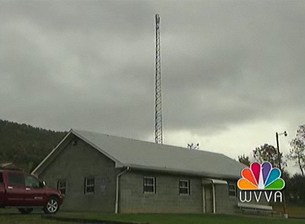New Report Says Wireless Broadband Providers May Have to Implement Usage Caps… But They Already Have
![]() A new report from Frost & Sullivan (pricey subscription required) warns wireless broadband providers may have to implement limits on the amount of data consumed by customers, a surprising result considering the vast majority of carriers already do.
A new report from Frost & Sullivan (pricey subscription required) warns wireless broadband providers may have to implement limits on the amount of data consumed by customers, a surprising result considering the vast majority of carriers already do.
The business research and consulting firm says some wireless carriers are struggling to balance the consumption they encouraged with the physical capacity of their networks. Citing AT&T’s iPhone and its data-rich App Store, which lets consumers download data applications to run on their phone, the research shows data consumption has increased dramatically as consumers integrate smartphones into their daily lives.
“We all knew as an industry that mobile data would grow, and we saw these growth curves that were a 45-degree angle upward,” said James Brehm, senior consultant at Frost & Sullivan. “But the true growth of the iPhone, when you chart it, looks more like a hockey stick.”
The demand for data is pressuring the industry to invest additional money for upgrades, and Wall Street isn’t happy with a trend that guarantees expensive upgrades will be required to meet customer demand — upgrades that would come straight out of revenue, unless a dramatic shift takes place towards consumption-based billing.
“You’re going to see some push back from consumers, but AT&T’s not going to be the only one that’s going to have to do this,” Brehm said. “Every service provider out there is going to ultimately change the way mobile data is consumed and priced over the next few years.”
The argument essentially comes down to how much revenue wireless carriers will be forced to invest in their networks, and how much noise they will hear from investors for doing so. Wall Street prefers customers pay the costs for upgrades by increasing prices for data service, which would assure revenue expectations remain stable. Customers demand wireless carriers invest some of their profits back into their networks to improve service and in return enjoy customer loyalty and any revenue earned from selling additional services.
Some carriers are choosing to stay out of the fight, claiming they already have sufficient capacity to serve customers. Besides, most of them already have usage limits on their services, traditionally set at a maximum of 5GB of consumption per month.
T-Mobile believes it already has enough capacity to meet the growing demand from data-hungry smartphones. It has invested in new technology that claims to triple current 3G speeds and works with current 3G phones, meaning customers don’t have to buy a new phone to enjoy the faster speeds.
Sprint is constructing its 4G network and already sells service in several cities through Clearwire. Sprint claims unlike some of its competitors, it intends to stay ahead of the growth curve by investing now in additional spectrum and technology to manage its networks. Sprint claims it has plenty of room to expand capacity.
Verizon Wireless says it has more consistently upgraded its network over the past decade than any other carrier, and is well prepared to accommodate even the iPhone.
“We have put things in place already,” Verizon Wireless Chief Technology Officer Anthony Melone tells Business Week. “We are prepared to support that traffic.” Next year, the nation’s largest wireless carrier will be rolling out 4G upgrades in America’s 30 largest cities, although primarily for mobile broadband service accessed through a mobile broadband dongle.
Verizon already limits consumption on its wireless plans to a maximum of 5GB per month, with overlimit penalties for those that exceed it.
Most of the attention remains focused on AT&T and the iPhone, because the data plan provided for iPhone customers does not carry a specified limit.
Vipin Jain, chief executive of Retrevo, a consumer electronics shopping Web site told the Chicago Tribune, “As soon as you put a cap (on data usage), there’s going to be a backlash.”
So what keeps wireless providers from upgrading their networks and keeping consumption billing and usage caps away?
In addition to pressure from Wall Street, another Frost & Sullivan report points to an unsettled marketplace. The progression towards 4G has been stalled because of the economic downturn, the report says.
Frost & Sullivan ICT Program Manager Luke Thomas says carriers are still waiting for consensus on several issues, including support for voice and SMS and a harmonized frequency band for 4G traffic. Thomas also says many cell towers have limited capacity to support additional traffic. A tower can deliver only as much data as its connection back to the provider’s network can handle. Once the “backhaul” link is saturated, calls start to drop and data speed slows. Many still rely on dedicated, relatively slow copper wire circuits, although fiber optic links are becoming increasingly common.
Thomas also believes carriers will need additional spectrum, a minimum of 20MHz, to make 4G upgrades worthwhile.
Without all of these factors, Thomas believes the potential return on investment won’t be high enough to justify moving forward any time soon.


 Subscribe
Subscribe




